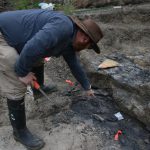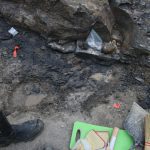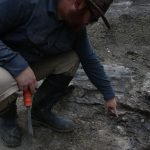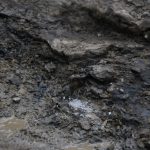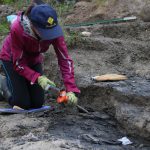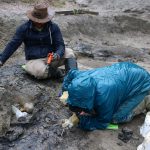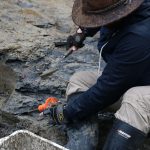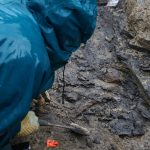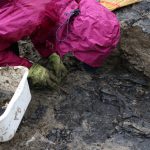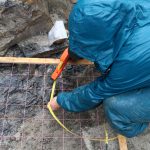This summer is expected to be the busiest ever for palaeontological work in the Peace country. Big name palaeontologists like Philip J. Currie will be actively excavating, hoping to build a substantial collection of fossils.
Heading up a team working out of the Pipestone Creek bonebed will be Derek Larson, assistant curator for the Philip J. Currie Dinosaur Museum in Wembley. He says they expect to find Pachyrhinosaurus bones, but he’s hoping they’ll unearth even more.
“Some of these other rarer things that we’ve only got a handful of examples of: things like meat eating dinosaurs, some of the fish and lizards that were living alongside the dinosaurs. We’re hoping that we can really get a picture of this entire ecosystem that’s out here.”
He adds that the best way to do so is to collect as many fossils as possible. To help do that, museum curator and University of Alberta professor Corwin Sullivan will be in the region as well, bringing with him a team of international researchers.
Sullivan and the other palaeontologists will be working on other sites in the area, including the Wapiti River. He explains that the area is just as rich with fossils as parts of southern Alberta, but it is far less explored, meaning there’s huge potential for big finds.
“I’m sure we’ll come across some interesting specimens this summer, but the best ones are more than likely to be things we could never have anticipated,” says Sullivan. “Our bottom line will be to expect the unexpected.”
Bones and other fossils have been collected from the Pipestone Creek bonebed since the late 1980s, but Larson says there have only been a couple of summers when extensive work has been done. He hopes that by ramping up activity in 2017, the museum will play an even bigger role in local palaeontology.
“We really want to serve as a sign post to say, ‘yes, these fossils are here; please come and see them,’ and encourage people to learn about the history of the land and encourage education and discovery here at the museum. We hope that we can educate people and provide that service to the public.”
Grande Prairie Regional College is a major partner is this summer’s work, providing funding and support to the project. People can also get involved through the museum’s bonebed tours, summer camps and lecture series. The museum is also always looking for volunteers, both in the lab and the field. More information on opportunities can be found on the museum’s website.



